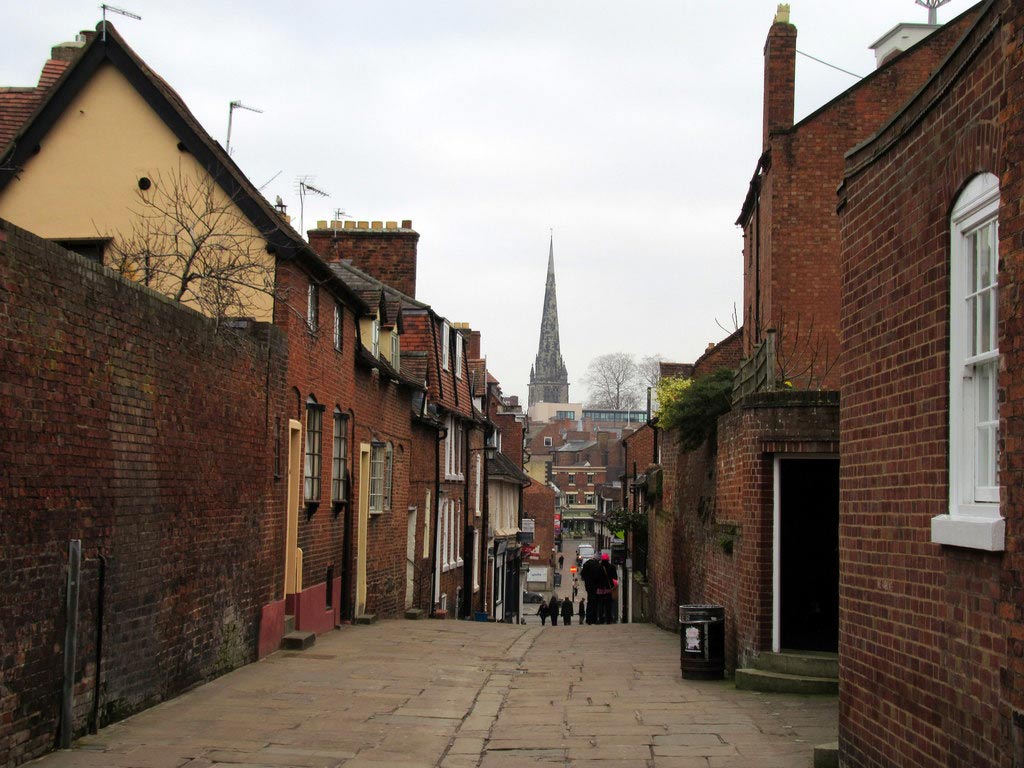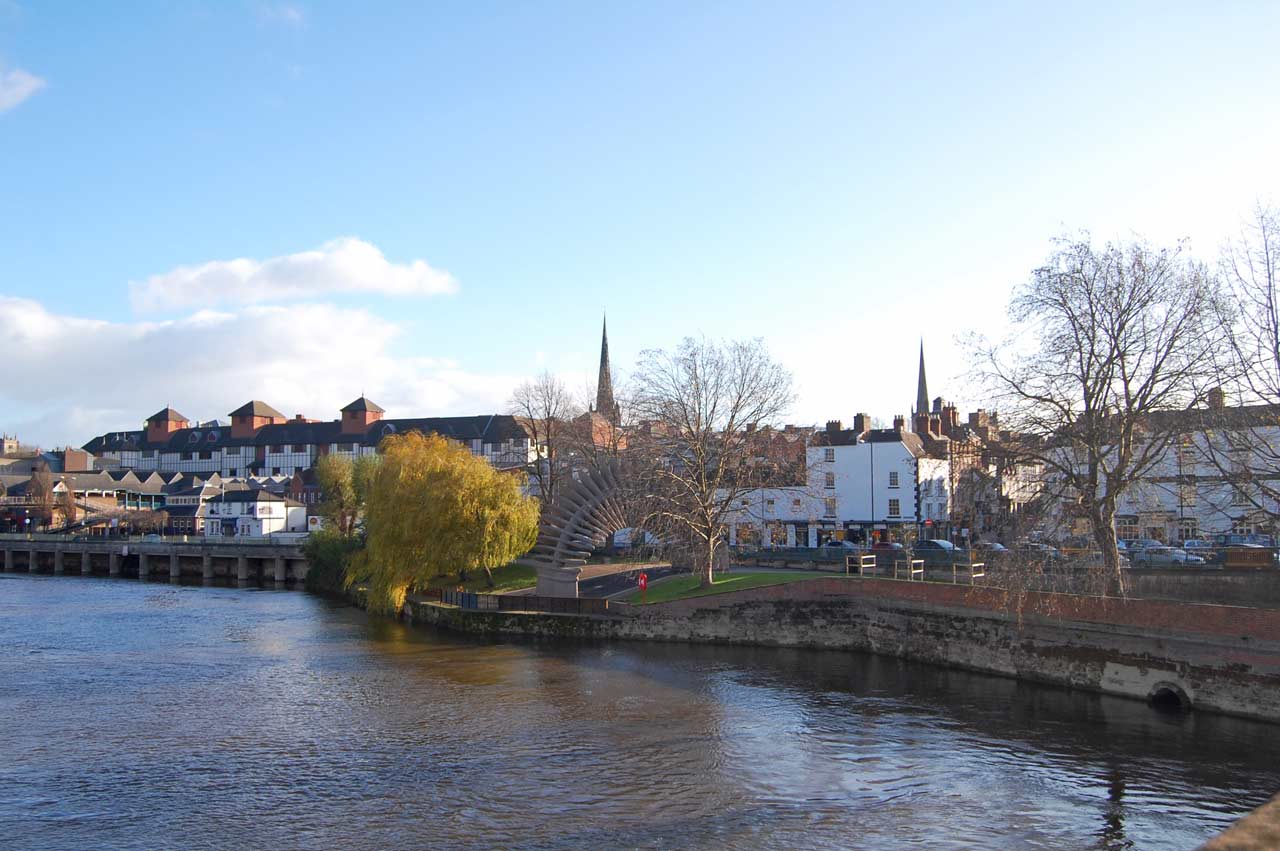A Charles Darwin Shrewsbury Walk
Charles Darwin is without doubt Shrewsbury’s most famous son. Born Charles Robert Darwin on 12 February 1809 to Robert Darwin and Susannah Darwin at their family home at The Mount, Frankwell in Shrewsbury. The Mount House is a Georgian property that holds a dominant position by the River Severn. It of course overlooks the historic town of Shrewsbury.
Over his lifetime, Charles Darwin would transform the way we understand the natural world. This guided walk will take you on a journey of exploration to understand how a young Darwin was influenced in his early years. Leading to what is considered the single greatest discovery in humankind.
What is Charles Darwin famous for?
Charles Darwin is famous for his contribution to the science of evolution. Darwin developed many of his theories of the natural world during The Voyage of the Beagle (1831-1836). However, it wasn’t until 1859 that he laid out his theory of evolution in his book ‘On the Origin of Species’.
Charles Darwin, alongside fellow pioneers in the fields of biology and geology, challenged the status quo of theocracy and seen by many at the time as a heretic.
What did Charles Darwin discover?
Darwin’s theory of evolution explained how species survived through a process which he called ‘natural selection’. Darwin’s work over his lifetime concluded that species that adapted and evolved to their natural habitat thrived. Those that failed to evolve died off.
In the world before Darwin, it was widely accepted that species were unconnected and unchanged since their creation. Pre-Darwin, it was claimed that the Earth was only 6,000 years old, not long enough for species to evolve.
Charles Darwin’s Shrewsbury Walk
To really understand the world according to Darwin, we have to journey back to a time, not so long ago in human history. Back to the town of Shrewsbury where Charles Darwin was born and raised.
The interactive map below includes many historic points throughout Shrewsbury. It can be used as a guided walk or just to explore the history of Shrewsbury at your leisure.
1. Charles Darwin’s Birthplace
Charles Darwin was born at The Mount House in Shrewsbury on 12 February 1809 and grew up here with his five siblings. The property is typically Georgian and was built by Charles’ father Dr Robert Darwin in 1800.
It’s here that Charles would have spent his childhood and developed a keen interest in the natural world as a child.
Although as an adult Charles Darwin spent much of his time away from Shrewsbury, while at university (1825-31), on his great voyage (1831-36). Charles lived in London and Kent thereafter, he continued to visit Shrewsbury until his father died in 1848. The Mount House remained his family home until 1866 following the death of his unmarried sister Susan and the subsequent sale in 1869.
Source: The Mount House circa. 1860. Image is available in the public domain.
2. The Dingle
The Dingle is hard to miss in Shrewsbury. It sits pride of place in the centre of Shrewsbury’s The Quarry Park.
Without a doubt, during Charles Darwin’s time in Shrewsbury. He would have seen this once common ground beginning to transform into something like what you see today. However, it wasn’t until the Shrewsbury Corporation bought the land in 1875 that arable farming ended entirely. Even so, it was still a popular place to relax from around the 1600s.
A certain young Charles Darwin was one such lad who enjoyed spending his time in The Quarry, catching newts and studying rocks.
A legacy of questioning the natural world around him
Robert Darwin of Elston (1682-1754), Charles Darwin’s great-grandfather from his father’s side made a significant discovery at his Elston estate in Nottinghamshire. On the underside of a stone used to prop up the well was a fossil of a Plesiosaurus. Darwin was instrumental in bringing the first remains of a Jurassic reptile to the attention of The Royal Society.
This surely must have made an impact on Charles Darwin as a child. Such creatures embedded within rocks discovered by an ancestor. You can imagine Charles looking for his own fossils within The Quarry and surrounding areas. After all most geological periods of time, and most rock types can be found within the county of Shropshire.
3. St. Chads
St. Chad’s Church is a dominant player in the Shrewsbury skyline and as you’re heading up from The Dingle, you’d be hard-pressed not to see it.
St. Chad’s is one of the six round churches in England but is the only one constructed in the Georgian period. It was completed in 1792.
What is interesting about this church and of the time is while Susannah Darwin (Charles’ mother) was a Unitarian, Charles Darwin was christened here in 1809. However, Charles’ family, on both the Darwin and the Wedgewood side were considered freethinkers. Free thought is an epistemological viewpoint and holds that beliefs should not be formed on the basis of authority, tradition or dogma. Instead, they should be reached by other methods such as logic, reason, and empirical observation.
Yet, Charles Darwin was christened here at St. Chads. The reason why is all to do with status. Esteemed families such as the Darwins and the Wedgewoods were expected to be christened. An Anglican (Church of England) christening was more than just a declaration of faith, it symbolised the core of British society at the time.
Charles’ grandfather Erasmus Darwin however was more than just a freethinker. Erasmus challenged Christianity as a whole, joking that Unitarianism was “a featherbed to catch a falling Christian”. In fact, it was Erasmus who would go as far as to suggest the idea of evolution and would have been considered a blasphemer and a heretic.
For those who have already done your homework, you may consider looking around for the gravestones of Charles Darwin’s father Robert Darwin, his wife Susannah and their daughter Susan. Unfortunately, there is another church found just outside of Shrewsbury in Montford called the Church of Saint Chad. If you wish to take a look it is just seven miles outside of Shrewsbury town centre, it should take you approximately 20 minutes by car.
“St Chads Church” by jimborobbo is licensed under CC BY 2.0
4. Claremont Hill
Shrewsbury was a royalist stronghold with ties back to the Catholic Stuart dynasty.
Following the Glorious Revolution in 1688, England was placed under protestant rule. This certainly would have stoked the fire of those of Catholic descent and ultimately led to the destruction in 1715 of Shrewsbury’s Unitarian Church in the High Street. It was torched by a Jacobitian rebellion, after which King George I gave his protection to Unitarians.
Following the rebuilding of the Church, 13 Claremont Hill became the Minster’s manse. It was also the home of the church’s school, providing non-Trinitarian education. Charles Darwin and his sister were pupils here under the care of Reverend Augustus Chase in 1817.
Charles Darwin was to only study here for one year. Upon the death of his mother to cancer in the same year Robert Darwin sent Charles to the Shrewsbury boarding school (which we’ll learn more about later).
This site also holds another story, which ties Charles Darwin with the poet ST Coleridge through both sides of Charles’ parent’s lineage.
As a candidate for a ministerial career, ST Coleridge received a letter from Josiah Wedgewood II (Susannah Wedgewood father and Charles Darwin’s grandfather), offering an annuity of £150 (approximately £13,000 today) per year as long as he would give up his ministerial career.
On the other side of the family was Erasmus Darwin (Charles’ other grandfather); a poet among many other talents. Such a poet was Erasmus that his style even impressed Wordsworth.
ST Coleridge who also praised Erasmus’ flair dismissed the content which heavily focused on evolution. Of which Coleridge stated: “that man progressed from an Orangutan [ape] state, so contrary to all history.”
“Claremont Hill, Shrewsbury” by John H Darch is licensed under CC BY 2.0
5. The Bellstone
The Bellstone could be the most significant piece of Darwin history in Shrewsbury.
In the Autobiography of Charles Darwin, Darwin wrote:
“An old Mr Cotton, a Shrewsbury naturalist who knew a great deal about rocks. He had pointed out to me a well-know erratic bolder in the town of Shrewsbury, called the bell-stone. He told me there was no rock of the same kind nearer than Cumberland or Scotland. He solemnly assured me the world would come to an end before anyone would be able to explain how this stone came where it now lay. This produced a deep impression on me and I meditated over this wonderful stone.”
It wasn’t until Charles Darwin attended the University of Edinburgh medical school along with his brother in October 1825 that he pieced together the puzzle.
After quickly losing interest in medicine, Charles would sit in other classes instead of his own. He’d learn taxidermy, joined debates with radicals that challenged the religious view of the time, explored the anatomy and lifecycle of marine invertebrates and the classification of plants. However, it was during one particular geology lecture while he was at Edinburgh University he discovered that glaciers were responsible for the Bell-stone’s presence in Shrewsbury.
A tale of two educations
A single field of study did not bode well with Charles.
After a number of failed years studying in Edinburgh, Charles father Robert grew annoyed with his neglect for study. Charles was then sent to Christ’s College, Cambridge where he was to study to become an Anglican country parson. A role we may refer to as a vicar these days, but before 1868 a parson could mean rector, governor, even philosopher who is attributed to a church.
Soon after Darwin’s arrival at Christ’s College he became deeply interested in entomology and persued beetle collecting. He read books on religious natural theology which used nature to prove the existence of God. Charles Darwin left in 1831 with an ordinary degree.
“The Bellstone at Morris Hall” by Ceridwen is licensed under CC BY 2.0
6. The Quantum Leap
Next up on our Darwin discovery walk of Shrewsbury is The Quantum Leap. It’s an abstract structure situated on the Riverside, created the celebrate the bicentenary of the birth of Charles Darwin in 2009.
While the sculpture is open to interpretation, it’s easy to pull out themes relating to dinosaurs, rocks and DNA. The Quantum Leap tells the tale of Charles Darwin’s combined learning which led to his greatest discovery.
7. Charles Darwin Statue
The Charles Darwin statue sits outside the former Shrewsbury School. He boarded here for seven years from the age of nine.
Charles was taken out of school early by his father on 17th June 1825. He left Shrewsbury on 22nd October 1825 to enrol at the University of Edinburgh alongside his brother Erasmus.
Charles Darwin was an average student at best due to a lack of interest in the mainstream academic subjects of the time, such as classics and Latin.
Charles writes of his time at Shrewsbury School:
“Nothing could have been worse for the development of my mind than Dr Butler’s school. It was strictly classical, with nothing else being taught, except a little ancient geography and history. During my whole life, I have been singularly incapable of mastering any language. Especial attention was paid to verse-making, and this I could never do well. I had many friends and got together a good collection of old verses, which by patching together, sometimes aided by other boys. I could work on any subject. Much attention was paid to learning by heart the lessons of the previous day. This I could effect with great facility, learning forty or fifty lines of Virgil or Homer, whilst I was in morning chapel. But the exercise was utterly useless, for every verse was forgotten in forty-eight hours.”
You’ll notice that the sculpture of Charles Darwin has his back turned to the building.
But as such an avid reader, one has to wonder if he would have his back turned to the former school that is now the site of Shrewsbury Library.



















